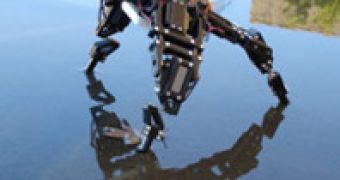During several years of development, robots have been taught to do many things, but recently a lot more attention was focused on their mimicking the human appearance, movement, feelings and reason in order to ensure people's better social acceptance. In this respect, a robot able of self-analysis and self-adaptation has recently been developed.
The ability to become aware of an impairment and integrate it into a new course of dynamics based on not using the damaged region to its fullest is rightfully thought to be a characteristic of the living. Even more, the impairment compensations by the brain, based on alternative, sometimes entirely different solutions, is done automatically and unconsciously, which is why people take it for granted. But programming a robot to do the same, without pre-established reactions and calculation, proves how hard this adaptation really is.
Of course, continuously self-adjusting, self-teaching and self-improving artificial devices have been the end goal of science for a long time now, but the repeated failing attempts kind of lowered the hopes and efforts in this regard. Still, a team of scientists from Cornell University, lead by Josh Bongard, came up with a self-adjusting robot which is able to constantly assess its body integrity and position, and find new ways of moving if detecting any change. It comes with no built-in solutions or pre-programmed strategies for addressing anticipated issues, instead it is designed to simply evaluate itself and the eventual changes and adapt as such.
The small bot has four legs (that make it look like a starfish), each provided with two joints, the angle of which is continuously measured by sensors, as their tilting. This helps it compensate for the lack of a pre-programmed kinesthetic sense (the ability of comprehending the connection and relation between the body parts). Starfish figures out its own structure by performing a series of random actions and observing their impact on its body through sensor arrays. Based on this, the robot designs several representations of its body's structure and proceeds to the next action series that helps it distinguish between the various representations and better understand its structure, its movement abilities and limitations and the order of its body parts required for motion.
When given commands, Starfish tries to comply the best way it can. The continuous evaluation of its body integrity and movement solutions helps it in case something meddles with them. If, let’s say, one of its legs is removed, it recreates the entire process and finds new ways in order to compensate the problem during its motion. This ability is crucial for the future of robotics in two ways: besides the obvious self-adjustment feature that it endorses the following generations of robots with, it also opens large doors towards androids' self-awareness and self-improvement. In terms of robotics, who knows what this might lead to.

 14 DAY TRIAL //
14 DAY TRIAL //